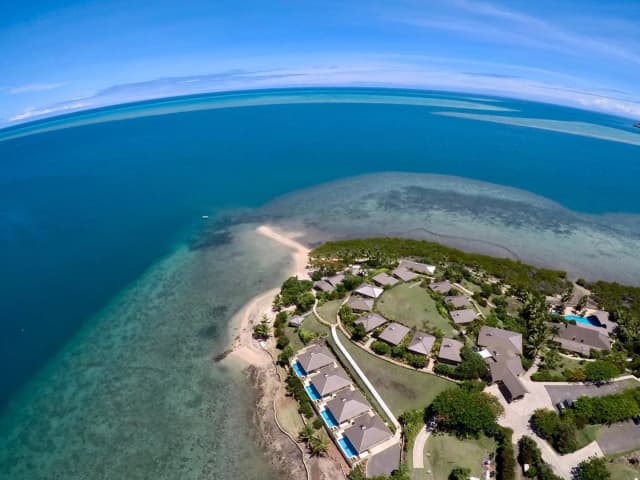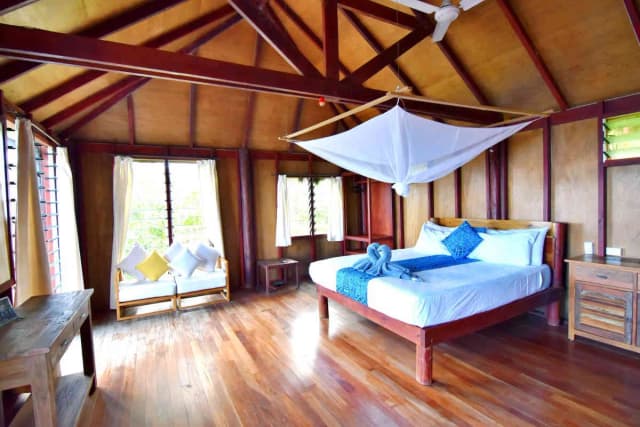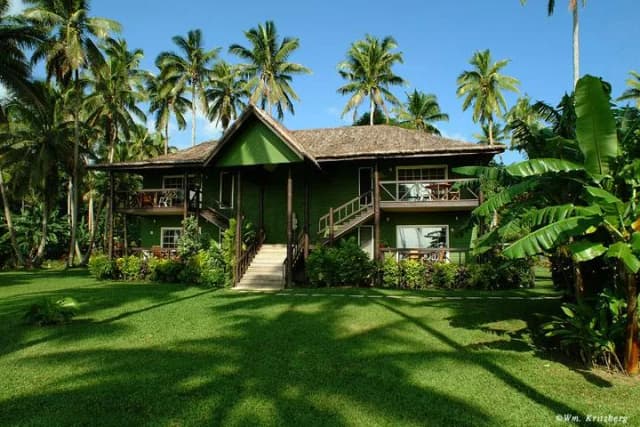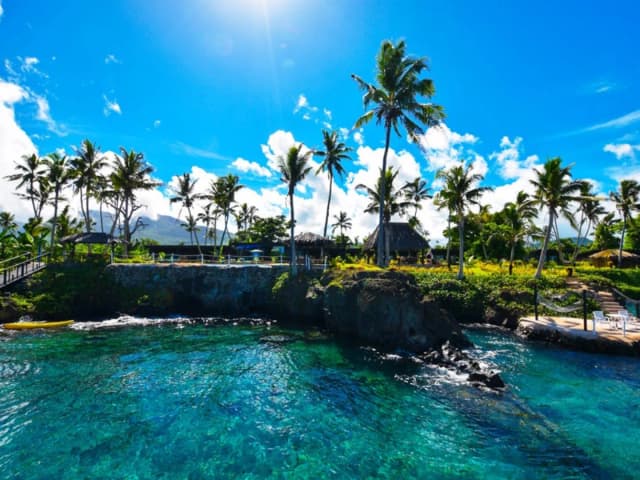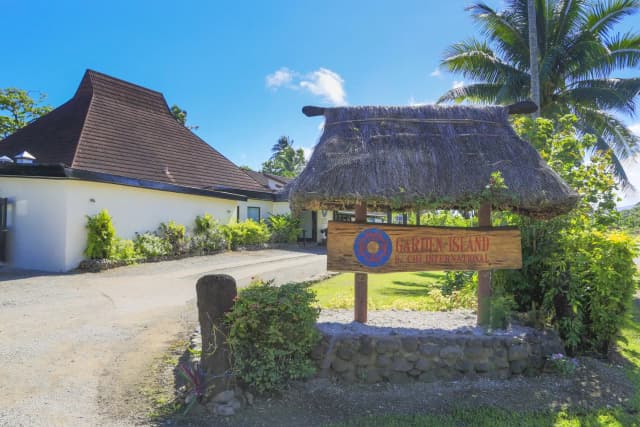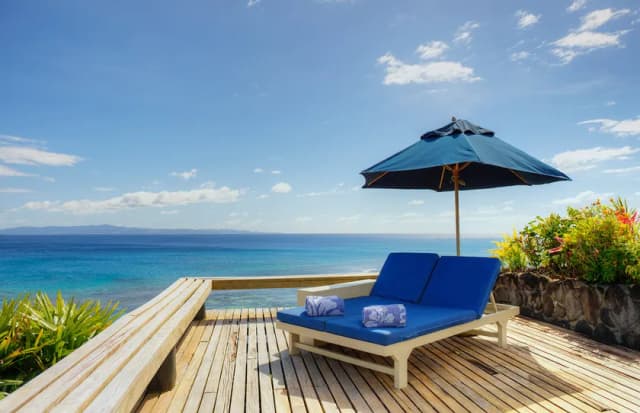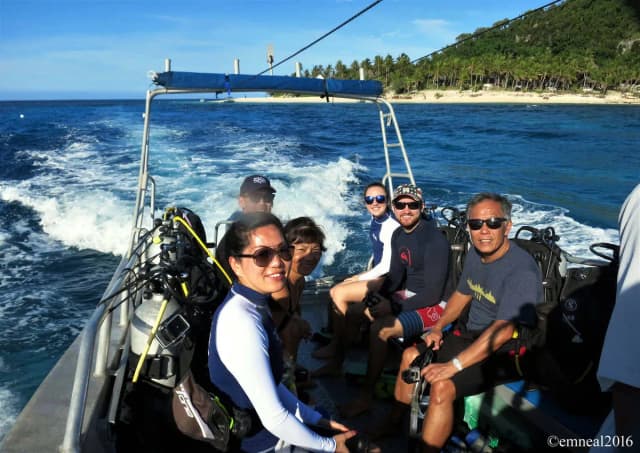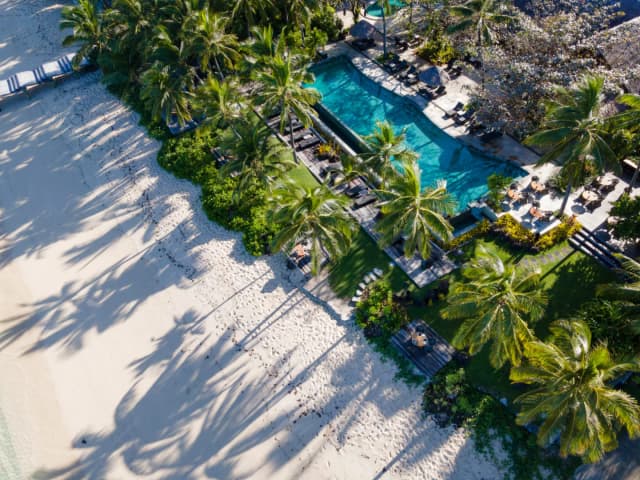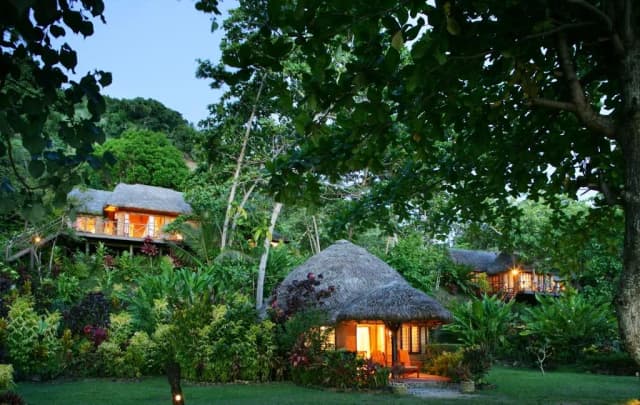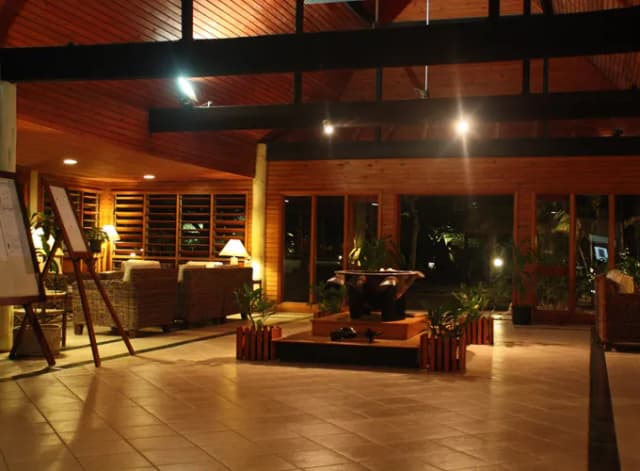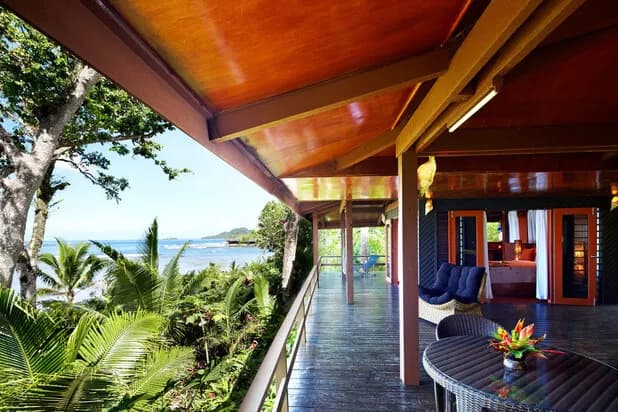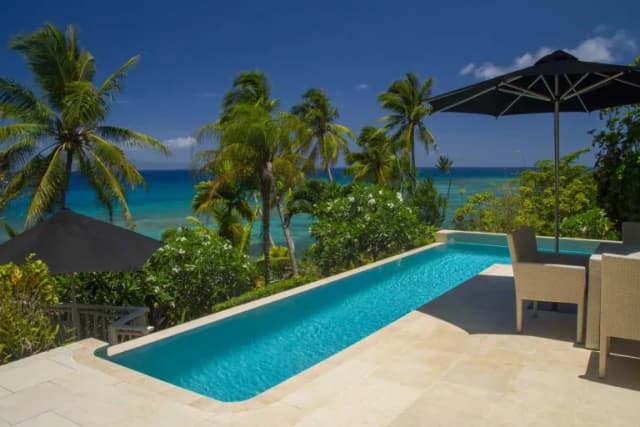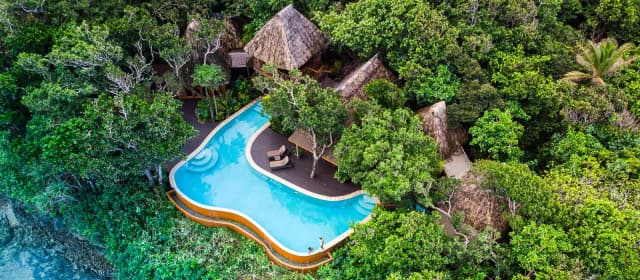Taveuni Dive Resort
Rooms starts from
$163
per person/per night
About Taveuni Dive Resort
Taveuni, Fiji
How To Get There
Fiji is serviced with flights from USA, New Zealand, Australia, China, Singapore, Hong Kong, and Korea. Fiji Airways codeshares with Qantas and American, while Air New Zealand codeshares with United. Both fly into Nadi airport with almost daily connections. Once at Nadi you get a domestic flight to Taveuni (Matei airport) a flight time of approximately 60 minutes. From the Matei airport, its a pretty 30-minute drive to the resort.
Dive Overview
With its prime location, Taveuni Dive Resort boasts the quickest boat ride to Rainbow Reef and over 20 dives sites. Fiji offers excellent dive diversity
[Read More: Fiji Dive Travel Guide]Accommodation Overview
Taveuni Dive Resort's 8 bures are far more comfortable than traditional bures. Each spacious room includes a lounge area that includes a small refrigerator, a lounge/couch that converts to a bed, side table, and chairs that most guests move back and forth between the patio and the interior of the bure. In the middle of the bure is the sleeping area, with a king size bed and benches along the wall to store your gear or baggage. At the rear of the bure are the shower, twin sinks, and water closet. Each bure can comfortably hold two people, with a third person or children sleeping in the lounge area. They can adjust the bedding to accommodate different sleeping arrangements.The large rooms have louvered windows and high ceilings with ceiling fans, providing natural ventilation to keep the rooms cool without the need for air-conditioning, and solar hot water heaters equipped with backup electrical elements provide hot water.

Ocean/Garden View Bures Single Occupancy
Relax in our spacious bures, featuring a king-sized bed, convertible lounge, and private patio. Enjoy natural ventilation and modern amenities for ultimate comfort.
Air Con
Fan
En Suite Bathroom
Hot Water Shower
from
$163 pp/pn
Room price based on double occupancy
Food & Drinks
Order your meals ala carte from the on-site restaurant and bar, the Salty Fox, a favorite among locals and expats. The restaurant offers a mix of modern, local, Fijian dishes alongside your favorites.
Dive Information
Diving The Rainbow Reef
Fiji's coral reefs are justifiably renowned worldwide and are among the more diverse and intact in the Pacific Ocean. A multitude of species make their home in the rich and diverse waters surrounding the Fiji Islands, including giant clams, sharks, groupers, tuna, barracuda, and colorful soft and hard corals. Fiji has more than 10,000 km2 of pristine coral reefs. Most of these reefs are fringing reefs that border nearby shores, while there are some flat-topped platform and barrier reefs. These reefs have spectacular biodiversity, with 467 species of mollusks, 298 species of hard coral, and around 1,200 species of reef fish. Fijis conservation traditions, coupled with the fact that oceanfront villages have traditional rights to both coastal waters and adjacent land, have paved the way for integrated conservation efforts addressing both land- and sea-based environmental threats. While these conservation projects are in their infancy, promising progress is being made.
Scuba diving in Taveunis waters earned its world-class reputation due to the Somosomo Strait. The Somosomo Strait is a narrow channel separating Vanua Levu and Taveuni. At every change in tides, water funnels through the strait, rushing along the reefs, providing nutrients and food to an unparalleled variety of marine life. This back-and-forth flow (incoming from the north, outgoing from the south) creates ideal conditions for lush soft-coral growth, providing dive sites like the Great White Wall, where Dendronephthya (the white soft coral earning the site its name) blankets nearly every inch of reef space.
Conditions like these are relatively rare it is uncommon for such a large volume of nutrient-laden seawater to be forced through a narrow, shallow passage suited to coral growth.
While only limited research has been performed in the area, scientists (many of whom are avid divers) are increasingly interested in ways to study and measure the unique environment of the Somosomo Straits. Two recent examples included the Great Fiji Butterflyfish Count and the Great Fiji Shark Count. Butterflyfish are an important species for measuring comparative biodiversity because of their wide range across the globe, and their usefulness as an indicator species butterflyfish populations are only large in areas where the ecosystem is healthy. Of the 116 known species of butterflyfish and bannerfish, at least 27 species of butterflyfish and 6 species of bannerfish are present in Fiji. Counting results observed 100% of the species known in Fiji to be present in Taveunis waters.
Results from the Great Fiji Shark Count suggest that almost 800 sharks were observed on the last census, averaging 1 shark per dive. A total of 5 species were recorded in Taveunis waters, including whitetip reef sharks, tawny nurse sharks, leopard/zebra sharks, blacktip reef sharks, and grey reef sharks. Other species, such as scalloped hammerheads have been observed, but not as part of the shark count.
Dive Guide
They divide the dive sites into 3 categories: Wall, sloping reef with pinnacles and sloping reefs. Likely the most popular dive site in the Rainbow Reef is the Great White Wall (a perpendicular wall covered in ice colored soft coral, below 15m/45ft). Due to tidal conditions, we dive the Great White Wall only a few days each month, so check the schedule). Other popular wall dives are the Purple Wall, the Zoo and the Fish Factory.
Dives with sloping reef with pinnacles (bommies) include the famous Annies Bommies and the Mini White Wall. Well-known slopping reefs are Jerrys Jelly, Sams Point, Fish Factory, and Rainbows End.
Many of the dive sites make ideal snorkel sites and we often get lucky and have slow, gentle drift snorkeling!
The favorite sites for snorkeling are Nuku Reef, Fish Factory, and Cabbage Patch. Due to the rich flow of nutrients, the amount of reef life you see on every dive or snorkel will amaze you! The most common reef fish that can be seen include butterfly and angelfish, trigger and parrotfish, fusiliers, anthias, wrasses, groupers and of course plenty of clownfish. Remember fish families have many different species. We typically see 3 or 4 different species include clownfish. Other interesting sea life includes giant clams, eels, nudibranchs, flatworms, dolphins, octopus, turtles, sharks, and rays.
Dive Center Information
Taveuni Dive Resort Dive Center Overview
Carl and Muriel Fox and acquired Taveuni Dive in 2002 with the mission to provide the safest, most reliable access to the incredible locations around Taveuni, Fiji. They hire experienced, local divemasters to assure you enjoy the wonders of the Rainbow Reef. They provide well-maintained, up to date equipment, and instruct PADI courses with their talented instructors.
Your safety is paramount. Carl has 40 years of experience in the dive industry and has been a PADI professional for more than 30 years. Feel free to bring your own gear, but if you are traveling light or just starting out, they offer a full range of the latest well-maintained rental equipment.
They are a PADI 5 Star Dive Center, offering a full range of courses whether you want Discover Scuba or to become a Dive Master they'll teach you; a great way to be trained is through PADI e-learning.
The dive boats consist of modern, custom-built Leeda aluminum self-bailers thoughtfully designed for ruggedness, and stability.
Customize your Stay
Diving, Meals & Extras
Practical information
Electricity
240 V
Time zone
UTC+12
Languages
Fijian & English
Accept Credit Cards?
Yes, Visa, MasterCard, & American Express
Discover similar resorts
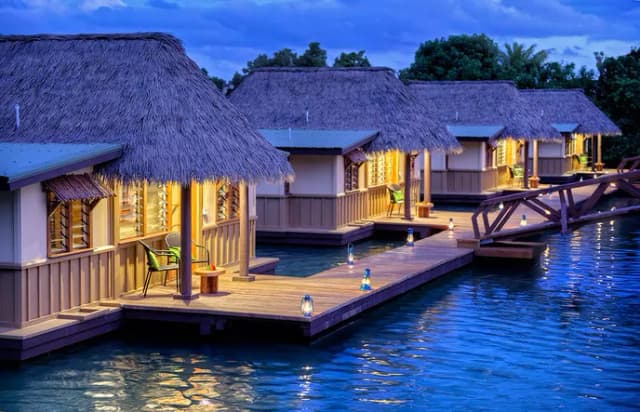
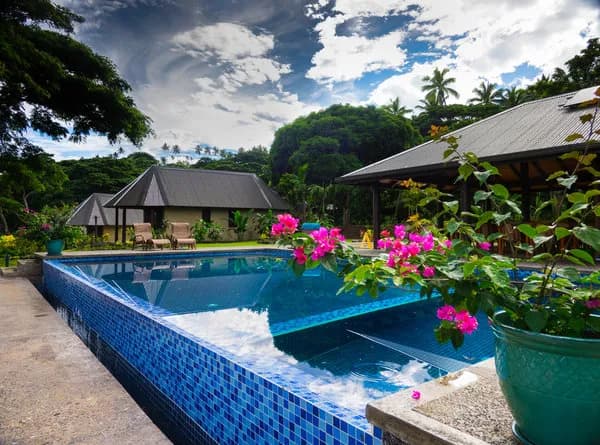
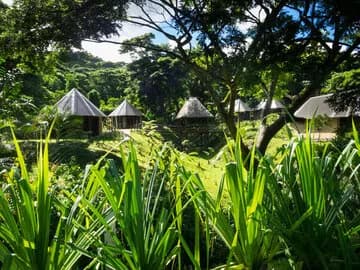
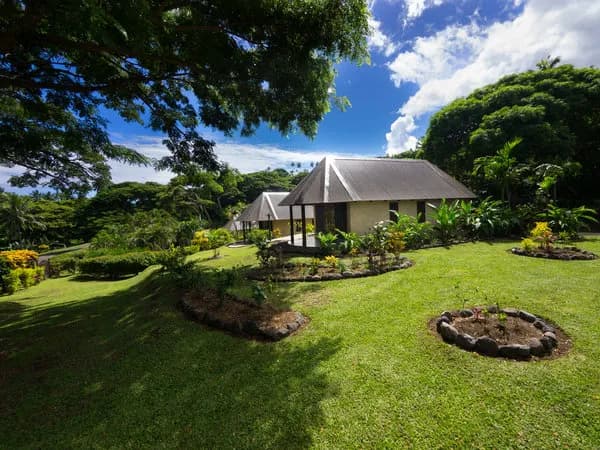
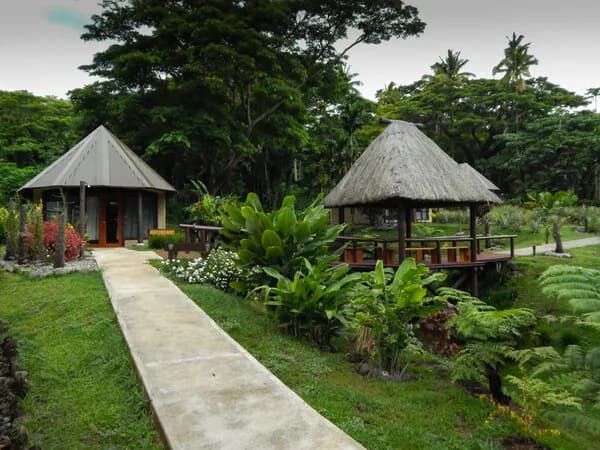


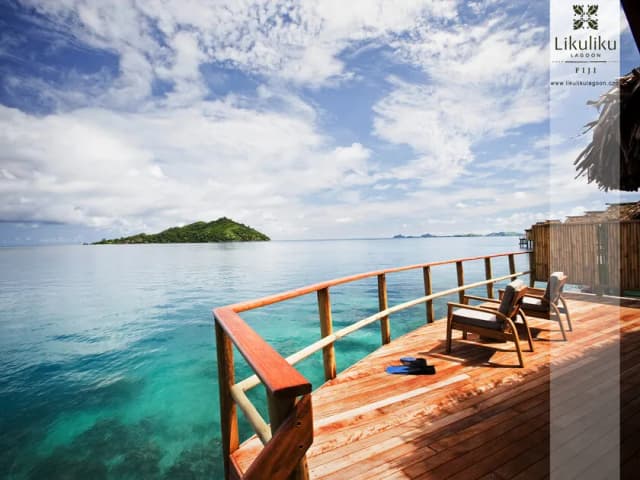

-optimized.webp&w=640&q=75)
